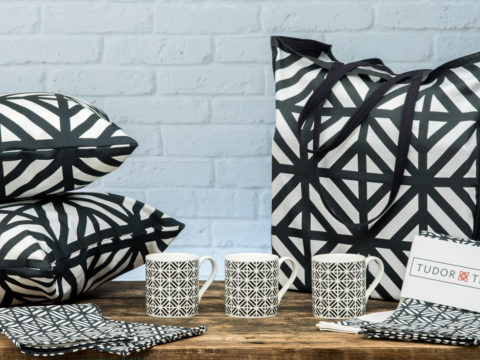Mary, Queen of France: Life Story
Chapter 4 : The New Court
The year after Mary’s proxy marriage, her father died at Richmond. In his will, he referred to the marriage, and noted that, should it not take place, Mary was to receive a dowry of £60,000 to be married to a suitable alternative prince.
The new king was Mary’s brother, Henry, now Henry VIII. One of the first acts of the new king was the arrangement of the funeral of their father. For mourning garments, Mary received two Parisian mantles at 20s each, two more at 26s 8d each, and six kerchiefs costing 9s each. She also had a new saddle covered in black velvet, to ride in the funeral procession.
The ladies who attended Mary to her father’s funeral were her aunt, Katherine of York, Countess of Devon; Lady FitzWalter; the Countess of Kent; Lady Anne Percy (sister of the Earl of Northumberland); Lady Gordon (probably Lady Katherine Gordon, widow of Perkin Warbeck) and Lady Verney (chief attendant to both Mary and her sister Margaret, Queen of Scots, wife of Mary’s Lord Chamberlain and niece of Lady Margaret Beaufort). There were also eleven gentlewomen in her train.
Before Henry VII was cold in his grave, the long-stalled negotiations for a marriage between Henry VIII and Katharine of Aragon were resurrected. Both parties were eager for the match, and Katharine’s father confirmed, not only that he was in favour, but also that he would now grant his blessing for Mary’s match to Charles, who was his grandson and heir.
Henry and Katharine were married in June and crowned on the 24th of that month, with Mary in attendance. The marriage began well, and the young couple presided over a magnificent court, with Mary almost invariably present, on the warmest terms with both.
On Shrove Tuesday, 13th February 1510, Archduke Charles’ ambassadors were wined and dined at Westminster. Katharine was not in evidence: having suffered a miscarriage, but still believing she might be pregnant (her mother had miscarried one of a pair of twins), she was in the purdah reserved for queens anticipating a birth. Mary, therefore, was the senior lady present, and it was she who delighted the company by dancing skilfully with Henry. In July that year, Mary was alone at Eltham, but this was unusual – she was generally with the court.
During the first years of Henry’s reign, the alliance with Burgundy strengthened, promoted strongly by Archduchess Marguerite, now governing the Low Countries (as the whole territory that Charles ruled was generally termed) on her minor nephew’s behalf. Marguerite had an implacable hatred of France, having been humiliated by King Charles VIII of France, when he jilted her for Anne of Brittany. In 1511, Henry gave Marguerite and Charles military support against the French, encouraging Marguerite’s positive feelings further – indeed, Maximilian thought his daughter too much in the pockets of the English.
The alliance culminated in the invasion of France in 1513. Henry was allied with Maximilian, Ferdinand of Aragon, and Charles, represented by Marguerite. Henry’s vision was to conquer France, and be acknowledged as its king, as his predecessor Henry VI had been. Maximilian had lesser ambitions – to take a couple of border towns between the Low Countries and France, and Ferdinand’s interests were in the Franco-Spanish border.
Henry was successful, to a point. He captured Touraine and Thérouanne (memorably described by Thomas Cromwell years later as ‘ungracious dogholes’), and also took the Duke of Longueville prisoner. The duke was sent to England until he could raise a ransom. Amongst Henry’s closest companions during the war was Charles Brandon. The two young men went to Archduchess Marguerite’s court at Lille – probably giving Marguerite’s young, English, maid-of-honour, Mistress Anne Boleyn her first glimpse of her king.
Henry pronounced himself impressed with his young brother-in-law to be, and all seemed set fair for the final wedding ceremony, which it was agreed would take place in the following July, at Calais, in the presence of Maximilian, Marguerite, Henry and Katharine.
According to a letter sent by Marguerite to Henry, he agreed that, in default of male heirs, the crown would descend, not to his elder sister, Margaret, Queen of Scots, but to Mary, and that he would persuade the English Parliament to confirm his promise. There is no evidence that he took any such step.
Henry and Brandon had a most enjoyable sojourn at Marguerite’s court. Brandon appeared to get on so well with archduchess, that it was rumoured that she was in love with him, and intended to marry him. He was, at this time, a widower (following a rather complex marital history). He was betrothed to Lady Elizabeth Grey, Viscountess of Lisle in her own right, but she was not yet of age to marry. Despite this, Henry had granted him the title of Viscount Lisle, and the use of the lady’s estates.
It appears, nevertheless, that Henry thought a marriage between Brandon and Marguerite would be more advantageous to himself, and this may have been the reason for the king ennobling his friend as Duke of Suffolk. For Brandon to leap from plain Sir Charles, to a dukedom was a dizzying jump – it gave him the rank of fourth man in the land (excluding the clergy), after Henry and the Dukes of Buckingham and Norfolk.
Marguerite, however, was horrified that her courtly flirtation had been taken seriously and urged Henry to arrange Suffolk’s marriage to Lady Lisle, before he was sent again to her court. Henry, embarrassed that the matter had ended so badly, hastened to assure Maximilian that he would stamp out any rumours of such a degrading match.
Mary, Queen of France
Family Tree


